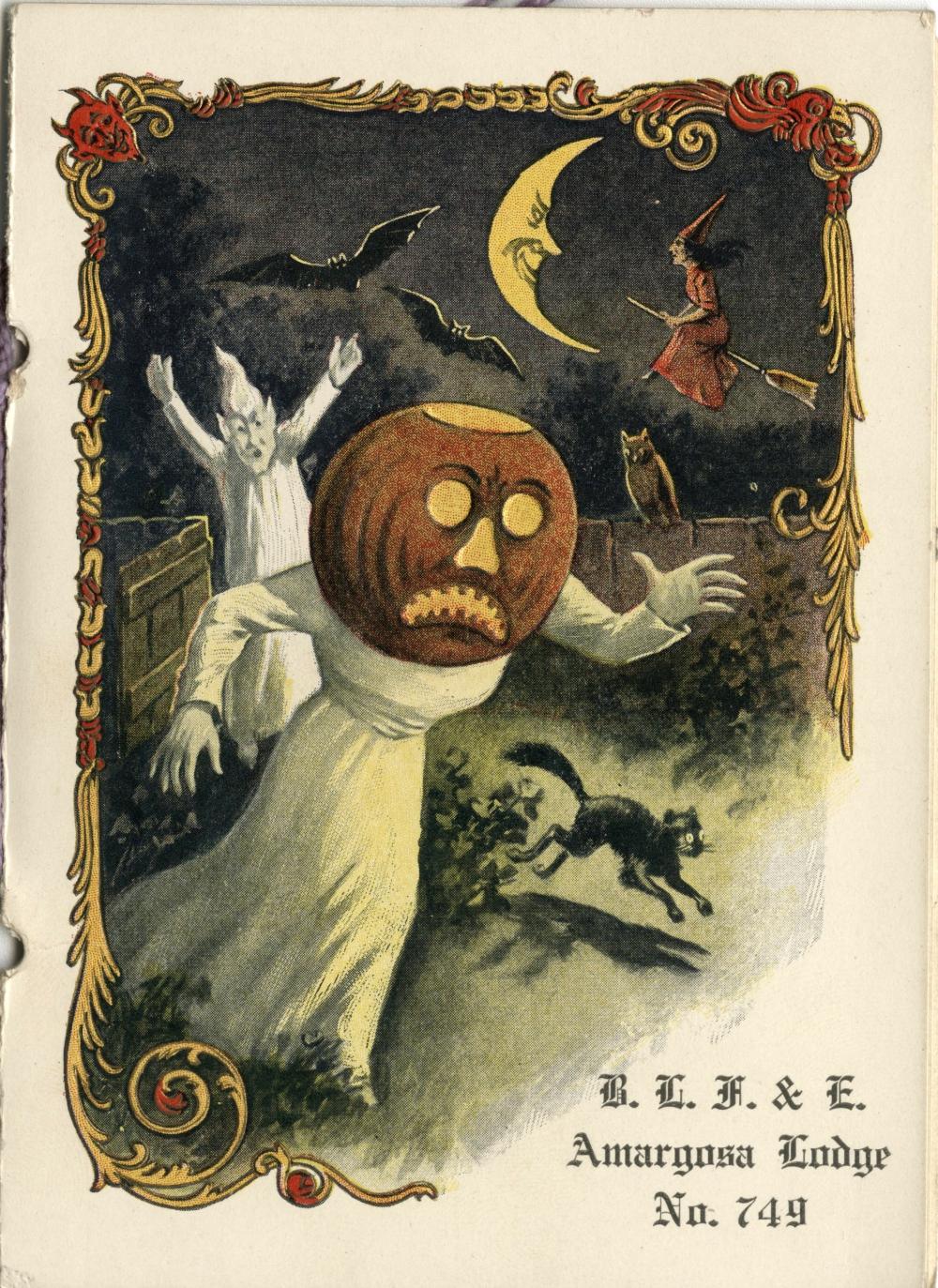
Halloween Ball Invitation, October 1919. UNLV Special Collections, Wengert Family Papers (MS-00192); box 1, folder 5
Boo! Sometimes Las Vegas can be downright scary. At UNLV Special Collections, archival materials document the city’s rich history of celebrating Halloween. During my 2014 summer internship here, I was delighted to stumble upon several ghoulish finds from Sin City’s Halloweens past.
Take for instance an invitation for a Halloween ball in 1919. Found as I processed the Wengert Family Papers (MS-00192), this invite was sent to a young Las Vegas pioneer shortly after her arrival in Las Vegas. The October 31 ball featured dancing, apple-bobbing, and a costume contest at a local lodge. The artwork of the invitation itself remains in spectacularly good shape. Featuring a black cat, ghost, and witch, it remains an authentic piece of early Halloween history in America. Even in the early days of Las Vegas, residents found time to celebrate the holiday.
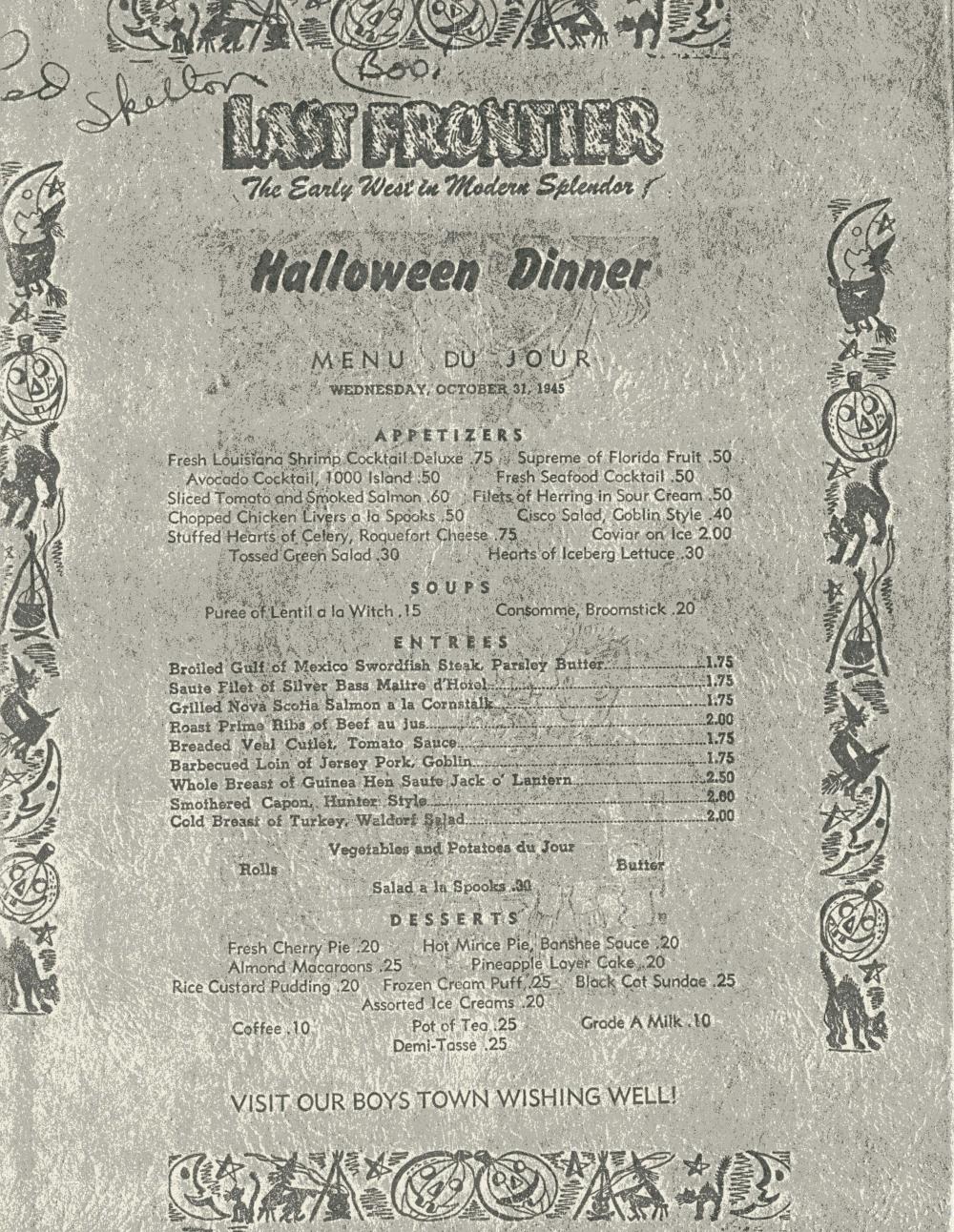
Halloween Last Frontier Halloween Dinner, October 1945. UNLV Special Collections, UNLV Special Collections UNLV Special Mida Mae Dick Collection (MS-00259); box 2, folder 7
As the city developed further in the twentieth century, hotels and casinos often embraced the spookiness of the season. On Halloween 1945, guests of the Last Frontier were presented with a most terrifying dinner menu. Chefs had prepared “Chopped Chicken Livers a la Spooks” and “Cisco Salad, Goblin Style” as appetizers. For the second course, guests chose from “Puree of Lentil a la Witch” and “Consomme, Broomstick.” The main course consisted of “Grilled Nova Scotia Salmon a la Cornstalk,” “Barbecued Loin of Jersey Pork, Goblin,” and “Whole Breast of Guinea Hen Saute Jack ‘o Lantern”; each entrée was accompanied by “Salad a la Spooks.” Dessert promised to be frighteningly delicious. One could indulge in either the “Hot Mince Pie” with “Banshee Sauce” or a “Black Cat Sundae.” The chilling dinner was even attended by Red Skelton, who autographed a menu “Boo!” The meal demonstrated that Las Vegas knew how to do Halloween in the 1940s. Collected with other Las Vegas ephemera, the menu is housed in the Mida Mae Dick Collection (MS-00259).
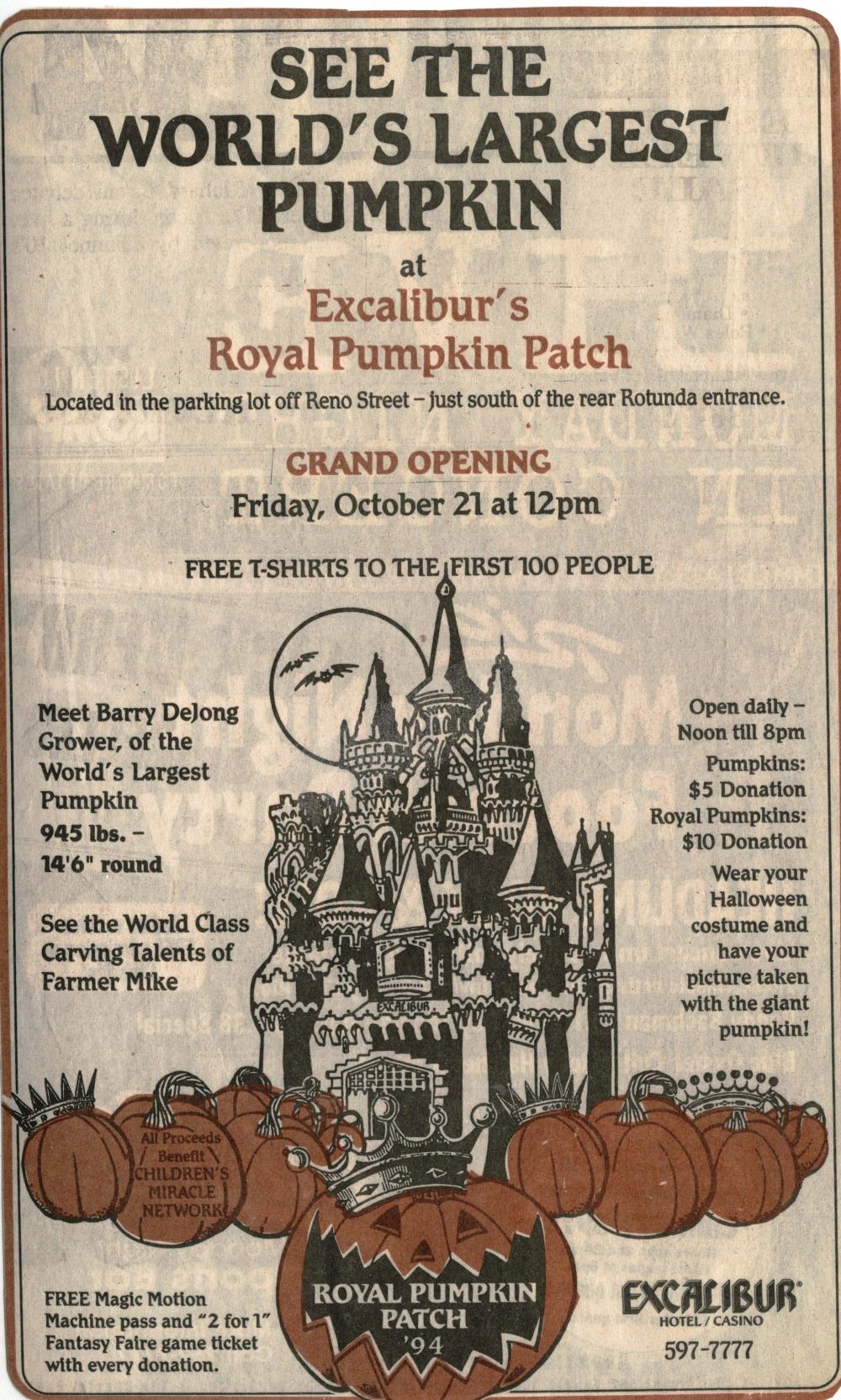
Excalibur’s Royal Pumpkin Patch, October 1994. UNLV Special Collections, Las Vegas, Nevada Casino and Hotel Advertisement Clippings Collection (MS-00644); folder 5
As Vegas attempted to become more family-friendly in the 1990s, hotels and casinos cashed in on the frightful fun of Halloween. The Excalibur claimed to have the “World’s Largest Pumpkin,” which was on display in its “Royal Pumpkin Patch.” Grown by Barry Dejong, at a terrifying 945 pounds it was the second largest pumpkin in recorded history.
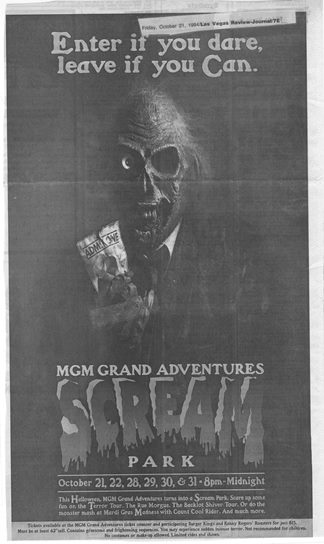
MGM Scream Halloween Haunt, 1994. UNLV Special Collections, Las Vegas, Nevada Casino and Hotel Advertisement Clippings Collection (MS-00644); folder 4
For adults (or awfully brave adolescents), the MGM Grand transformed its Grand Adventures Theme Park into a “Scream Park.” One could visit the frightful “Rue Morgue” or take the bloodcurdling “Terror Tour.” To calm the nerves, guests were encouraged to “do the monster mash” at “Mardi Grad Madness.” Both of these advertisements are housed in the Las Vegas, Nevada Casino and Hotel Advertisement Clippings Collection (MS-00644). Las Vegas continues to indulge in the ghoulish delights of the Halloween season. From the Circus Circus Fright Dome to Bonnie Screams Ghost Town, Sin City is home to horrifyingly good entertainment every season. Materials housed at UNLV Special Collections remind us that the city has a long history of embracing the spirit of Samhain.
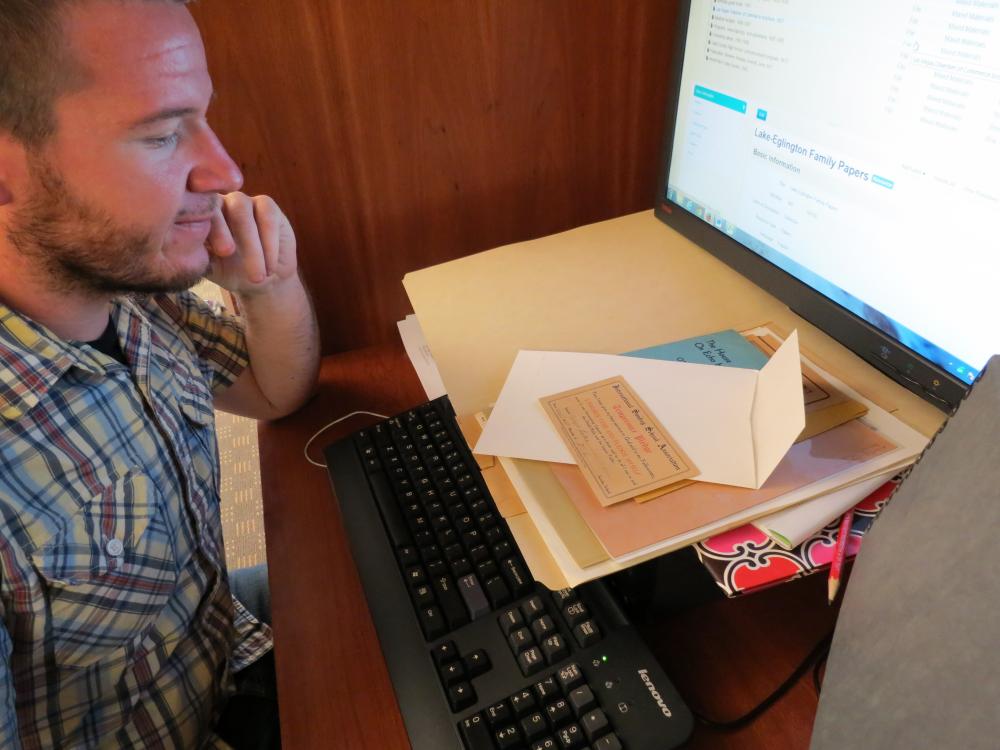
Ian M. Baldwin is a PhD candidate in UNLV's History Department.


